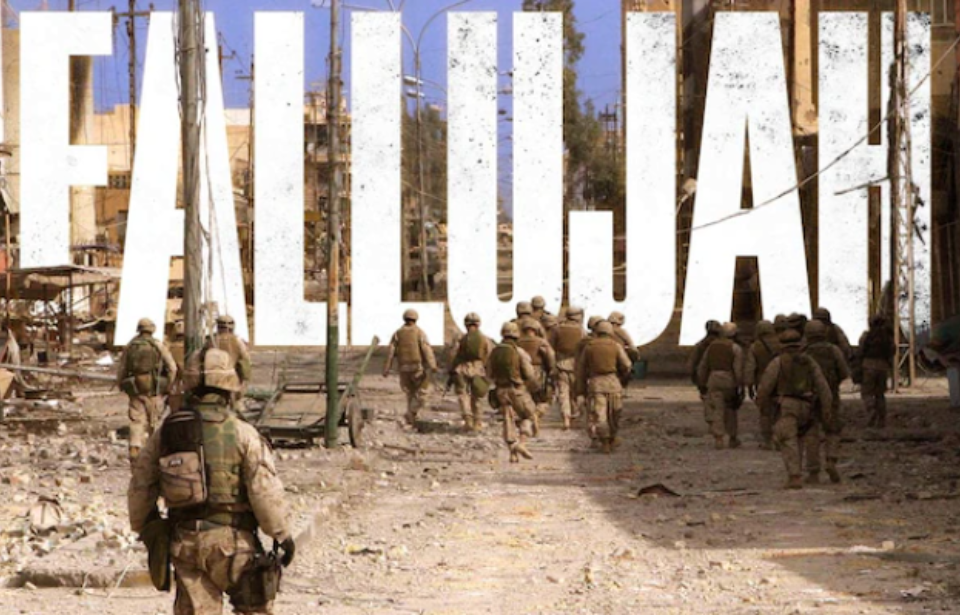Located along the Euphrates is Fallujah, Iraq, a densely-populated industrial city with ties to the ancient Silk Road. In 2004, its over 250,000 residents became caught in the crossfire of an intense battle between the US military and Jama’at al-Tawhid wal-Jihad (JTJ) insurgents. The First Battle of Fallujah left 27 American soldiers dead and forever changed the US approach to urban warfare.
American actions raise tensions in Fallujah
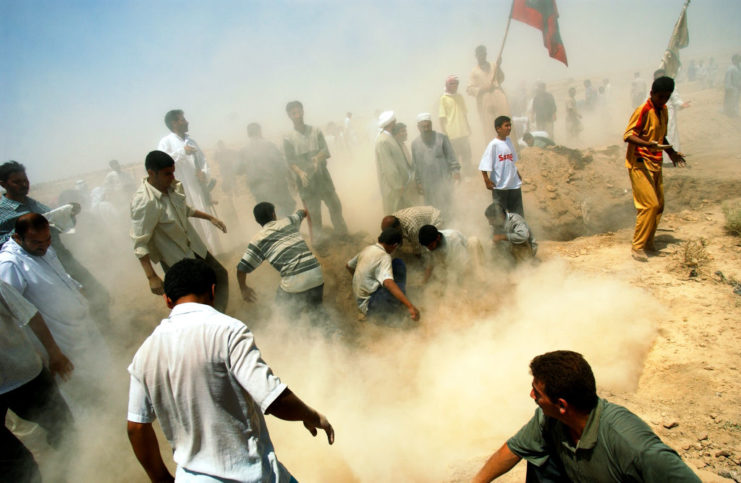
The cultural and political environment of the city was incredibly charged in the lead-up to the First Battle of Fallujah, also known as Operation Vigilant Resolve. Fallujah was dubbed the “city of mosques” for the over 200 religious temples it contained, which were particularly important to Sunni Islam practitioners.
At the onset of the War In Iraq, Fallujah’s town council was relatively pro-American, which informed the US military’s decision to dedicate a small number of troops to the area. The thinking was that residents were unlikely to cause trouble – reasoning that was soon proven false.
On the night of April 28, 2003, several hundred civilians ignored the military-enforced curfew and stormed through the streets, encountering American soldiers outside of Ba’ath Party headquarters. They were protesting the military’s presence, and the US Army Psychological Operations team tried to disperse the crowd. When they didn’t respond, soldiers with the 82nd Airborne Division opened fire on the unarmed group, killing 17 and wounding over 70.
Several days after the incident, the 82nd Airborne was replaced by the 3rd Armored Cavalry Regiment and the 2nd Battalion, 502nd Regiment, 101st Airborne Division, but the switch did little to mitigate another disaster. Within days, another group of unarmed civilians launched a daytime protest and US soldiers, again, opened fire, killing three more people.
Citizens and US soldiers continue to clash
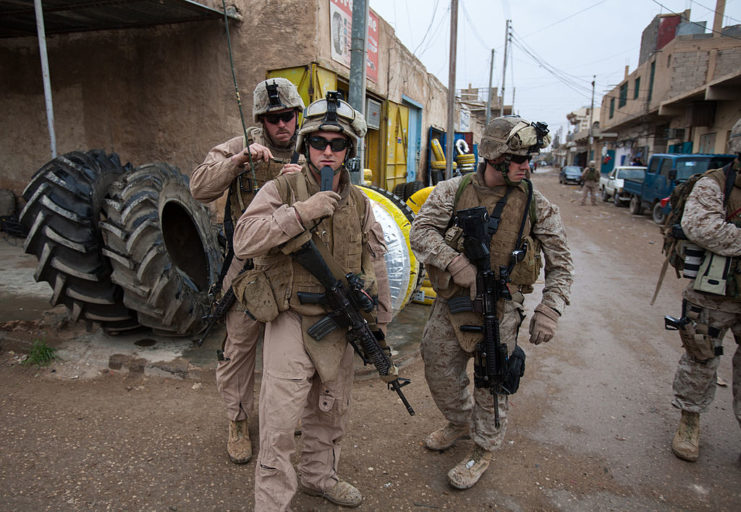
In early June 2003, members of the 101st Airborne were attacked by a rocket-propelled grenade (RPG) round as they mounted vehicles to return to base. Pfc. Branden Oberleitner was killed in action (KIA) and another six were injured. The attack was the first escalation of tensions between the US military and Iraqi insurgents in Fallujah.
According to the Modern War Institute, the “carrot and stick” approach used by the relatively small group of US troops in Fallujah likely contributed to the volatile situation. The American personnel dealt with “lucrative contracts for reconstruction projects and civic action initiatives,” while also doling out “aggressive raids against important enemy leaders and the quelling of protests.”
It didn’t take long for tensions to get out of hand, leading to Fallujah falling to insurgent factions intent on attacking the American presence in the city. The military subsequently took responsibility from the Army regiments and gave it to the 1st Marine Division on March 24, 2004.
I Marine Expeditionary Force commander Lt. Gen. James T. Conway tried a different approach, having Marines connect and build relationships with residents, while Special Ops discreetly targeted insurgent leaders. The plan was designed to allow the Marines to quickly hand over control of Fallujah back to local Iraqi forces, but no one knew just how entrenched the insurgency truly was in the city.
The deaths that prompted the First Battle of Fallujah
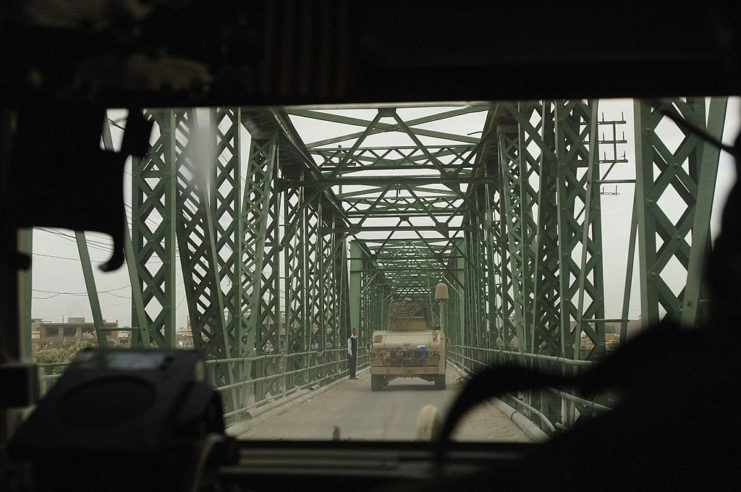
A series of incidents that occurred over the span of two weeks ultimately led to the First Battle of Fallujah.
The first, on March 18, 2004, involved an insurgent attack on a Marine command group along a local highway. Over a week later, a bomb blasted through the city, targeted at a nearby American unit, and, in late March, Marine patrols were met with 36 hours of intense firefights with insurgents.
On March 31, Iraqi insurgents ambushed an American convoy en route to deliver food to caterers, resulting in the deaths of four private military contractors with Blackwater USA. Their bodies were removed from the wreckage of their vehicle and dragged through the streets, before being hung over a bridge that crossed the Euphrates. Crowds cheered in the background, chanting, “Who asked you to come here?”
The insurgents also sent images to a number of global news agencies, triggering outrage in the United States. The day after, Brig. Gen. Mark Kimmitt announced an “overwhelming” response was planned, declaring, “We will pacify that city.”
Preparing to take on the insurgents responsible
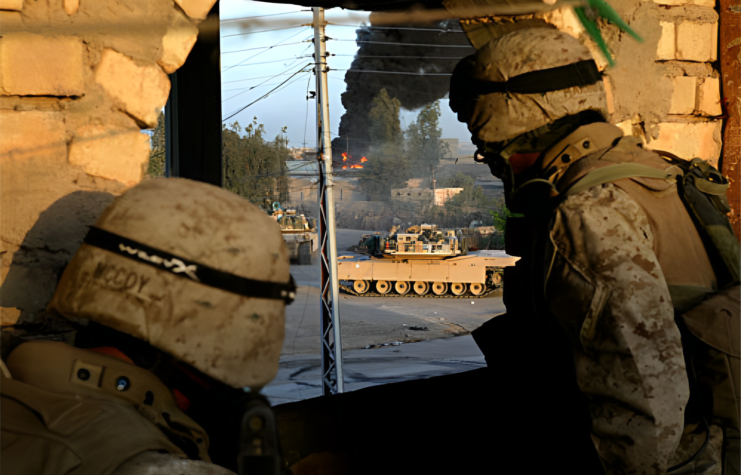
Within 48 hours, orders were given to begin offensive operations, despite the Marine commander’s wishes to scale down attacks and focus on strategic strikes against the known insurgents involved in the Blackwater deaths.
The first major assault to re-establish American control over Fallujah began on April 4, 2004. The city was encircled by a force of around 2,000, which included 1,300 US Marines. Air strikes and gunshots rang out throughout the night, and, by morning, the I Marine Expeditionary Force was poised to retake Fallujah and hunt down those responsible for the slayings.
All roads leading out of town were blockaded by Humvees and barbed wire, while troops took control of a local radio station and passed out leaflets informing residents to stay inside and cooperate in identifying the insurgents. To many, it was clear they were on the precipice of an intense conflict, prompting roughly one-third to flee the area. Meanwhile, US troops prepared to meet face-to-face with between 12-24 insurgent groups armed with RPGs, machine guns, anti-aircraft weaponry and mortars.
First Battle of Fallujah
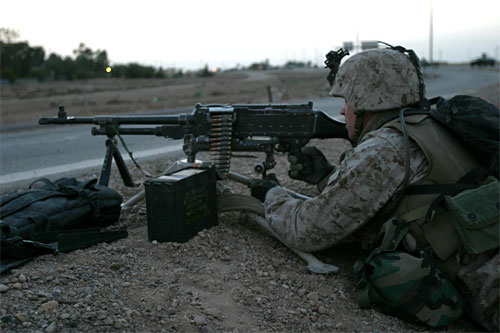
The First Battle of Fallujah triggered widespread fighting throughout the Sunni Triangle, the region in central Iraq between Baghdad, Ramadi and Tikrit. The unrest also coincided with a Sunni rebellion in Ramadi, where a number of foreigners were captured by insurgents. All the while, the ties Coalition forces had with Iraqi Civil Defense Corps personnel disintegrated, with many abandoning their posts entirely.
The Americans fought to tighten their grip around Fallujah, working toward the innermost parts of the city where insurgent groups had the most control. It was bombed from above, while Lockheed AC-130s equipped with howitzers and Gatling guns aimed at their targets.
US Marine Corps Scout Snipers also played a large role in the First Battle of Fallujah, with each sniper averaging 31 kills during the battle. Their success was largely due to the tactics used by PSYOP Tactical Psychological Operations Teams, who lured Iraqi insurgents into the sniper’s crosshairs using scripts intended to deliberately anger fighters. They also played music from AC/DC and Metallica over massive speakers.
Things weren’t going as planned
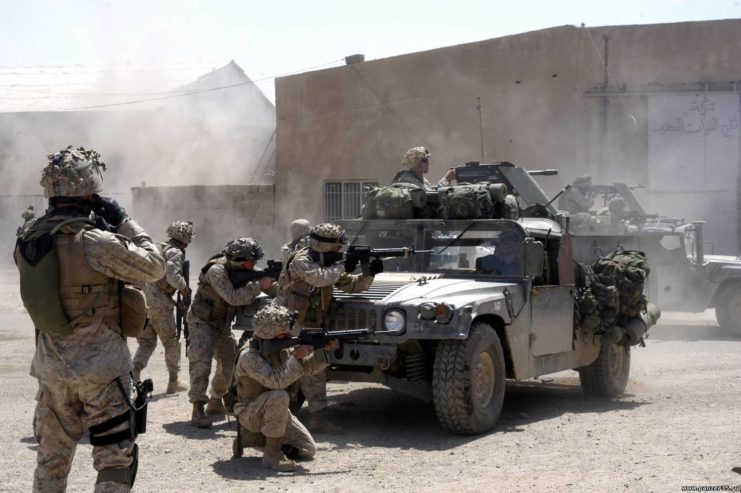
Even with all of the interventions, raids and calculated attacks over several weeks, US forces were no closer to eliminating the enemy. “It was like we kicked a hornet’s nest,” said Gen. Lance L. Smith, deputy commander of US Central Command.
US officials soon realized Fallujah couldn’t be won with just searches and raids and eventually paused all offensive operations to give Iraqi governing bodies the chance to take control of the situation within the city. At this point, the battle was, for all intents and purposes, a defeat for the Americans. Coalition forces were stuck fighting the Iraqi insurgents in a dense, urban environment, something Smith called “door-to-door fighting,” for which they had very little experience.
Sgt. Maj. Kyle E. Matus was deployed to Fallujah as part of Alpha Company, 2nd Battalion, 2nd Infantry Regiment, 1st Infantry Divison in 2004. He recalled the dangerous door-to-door operations conducted by the US, saying “As the fighting intensified, platoons from the company conducted house-to-house operations to clear out the city. The commanding officer was killed when he entered a house where insurgents sat in ambush.”
How the First Battle of Fallujah changed US military policy
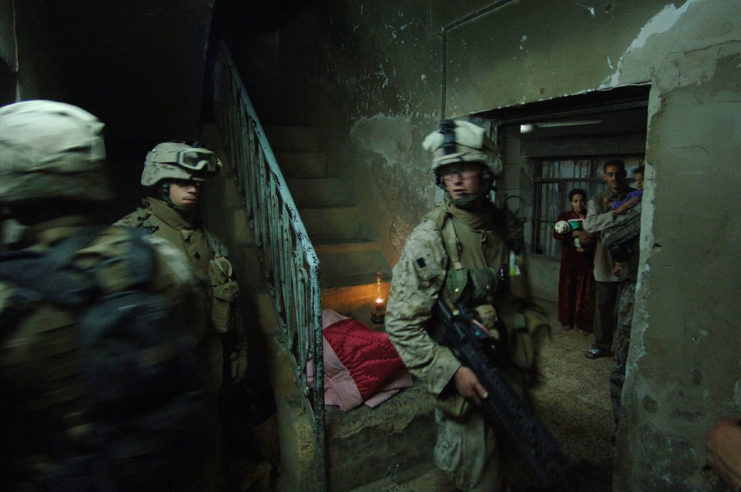
The US military withdrew from Fallujah on May 1, 2004 and turned over remaining operations to the Fallujah Brigade, a Sunni security force fashioned by the CIA. By that September, the Brigade dissolved and turned over its US-supplied weaponry to the insurgency, declaring their loyalty to those they were supposed to protect against.
The loss of the Fallujah Brigade triggered the Second Battle of Fallujah in November 2004. Unlike their first attempt, the US forces successfully occupied the city, but at a great cost – the engagement was the bloodiest to occur during the War In Iraq.
The fighting in Fallujah revealed a major fault in the training and experience of American soldiers: navigating conflict in an urban area. As the Modern War Institute explained:
“Militaries must understand the unique attributes of the urban area, population, mission, information environment, length of time needed, and enemy attempting to prevent the accomplishment of the mission. The First Battle of Fallujah was a loss for the US forces not because of fighting capability, but due to insufficient planning, force ratio, information operation, and ultimately political support for the situation.”
More from us: British Troops Were Ordered to Break Out Their Fixed Bayonets During the Iraq War
The military ultimately recognized its mistakes and used them to better inform how service members approach urban warfare.
